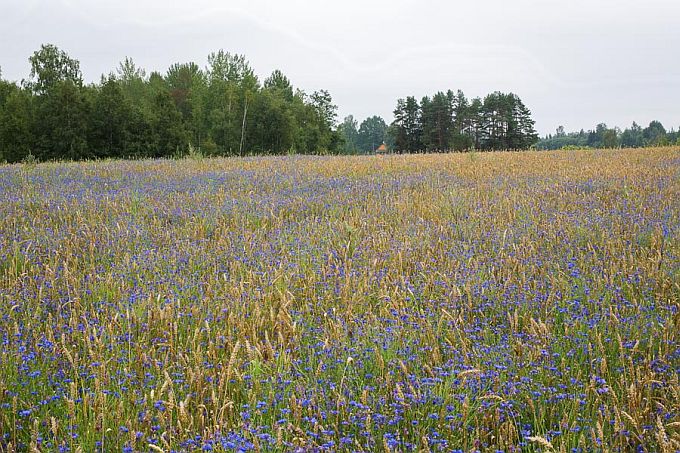At some point in time, we start looking in the nature for cornflowers.
We probably don’t notice them much before the second week of July, but then all of a sudden every Estonian seems to need them. And there really are certain fields, where dicotyledonous plants are not abolished and where they bloom happily just then.
There are certainly many things to learn about our national flower. For instance, just when do cornflowers start to bloom in our fields. When you ask people, most of them think, that it must happen around the time for the Song Festivals (usually at the beginning of July - translator), because then just about everybody carries cornflowers, either in bouquets or in wreaths on the heads of girls.
But those are mostly cultivated cornflowers. And if you don’t happen to own a phenological calendar or a herbarium, you can always check with Elurikkus (an Estonian biological database). There you can read, that the earliest you can find a blooming cornflower is June 17th. However, in my own photo collection I have a photo of a blooming cornflower, taken at Võrtsjärv (a lake in South-Central Estonia) on June 15th.
Checking with “Elurikkus” data base we find that cornflower blooms in Estonia mainly in July, and just about until September.
Cornflower will not do well as a cut flower and does not suit for a herbarium either, as its blue colour will turn white very soon.
People have tried to use it for dyeing cloth, e.g. for the blue in our national flag.
My grandfather Gustav Vilbaste wrote a paper in 1939: “Dyeing with plants in Estonia”, where he maintains that “The blue blooms of the cornflower must have been used in dyeing, as their beautiful colour should have given a lovely result”.
At Kullamaa (a village in Western Estonia) people were particularly clever in obtaining a deep blue colour with cornflowers. But also at Setomaa (south-eastern corner of Estonia) and Rakvere. And from Vastseliina (a borough in South-Eastern Estonia) Jaan Jakobson has written a thorough description of how to obtain with cornflowers a solid blue colour that can withstand both laundry and sunlight.
The art of dyeing with cornflowers has been lost over time, but nowadays it is customary to sprinkle their dried blooms on festive cakes.



